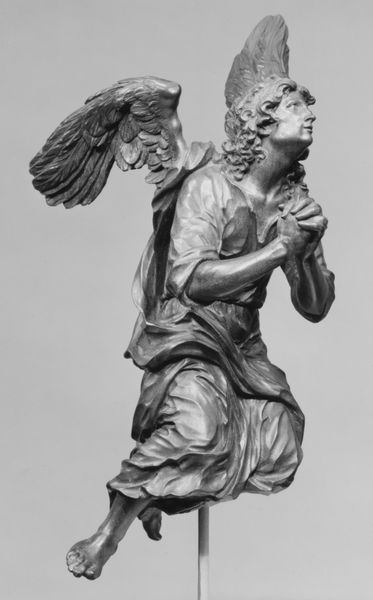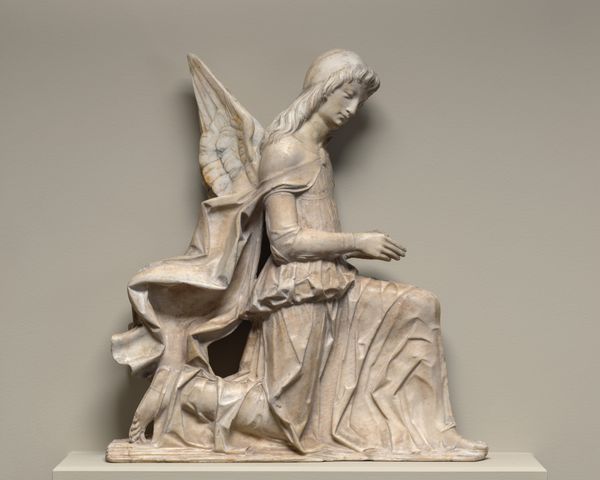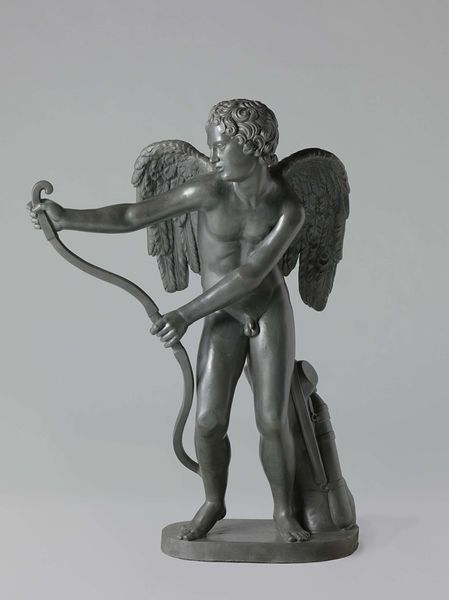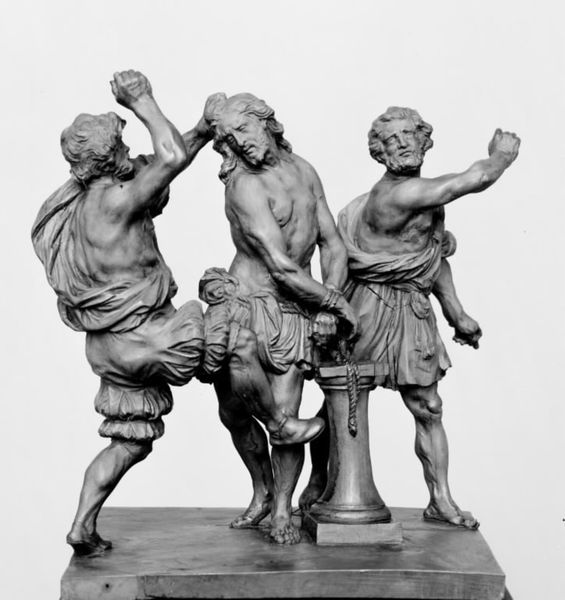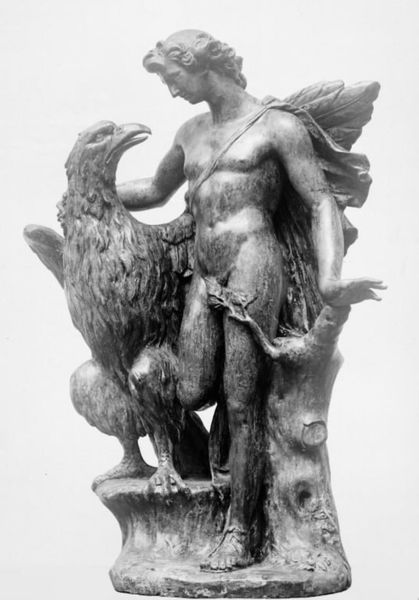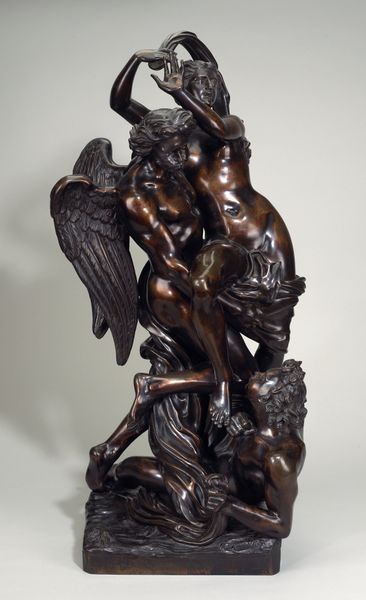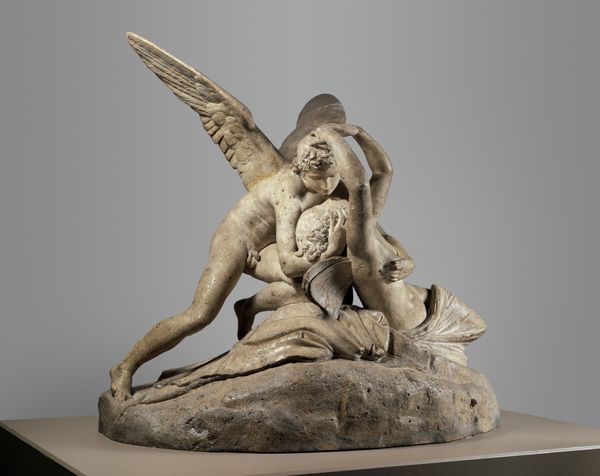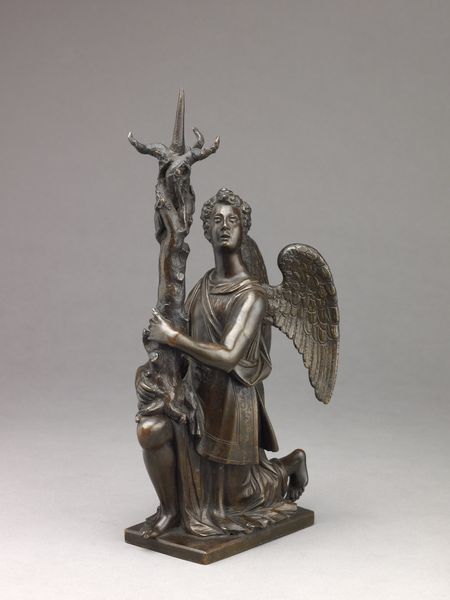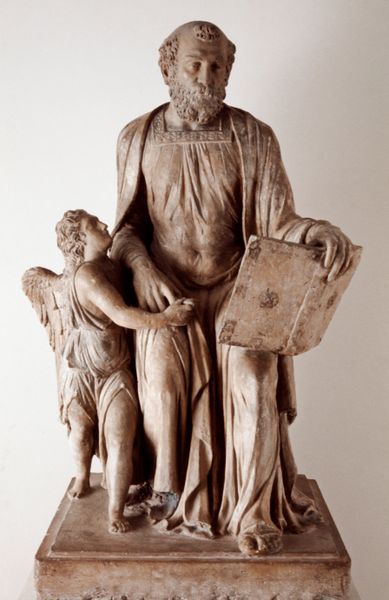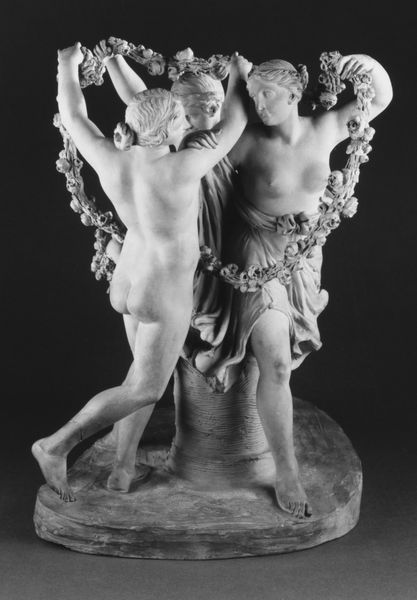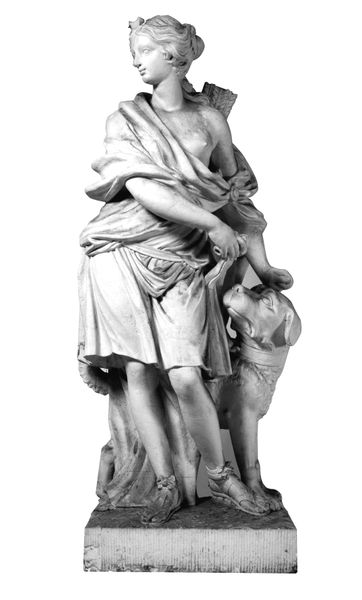
sculpture, wood
#
sculpture
#
figuration
#
sculpture
#
symbolism
#
wood
#
statue
Dimensions: 305 mm (height) x 269 mm (width) x 100 mm (depth) (netto)
Editor: Here we have "Jacob Wrestling with the Angel," a wood sculpture from 1913 by Rasmus Harboe. I’m struck by the almost brutal abstraction of the figures; their forms are simplified, yet the tension between them is palpable. What do you see when you look at this piece? Curator: The raw, almost primitive, handling of the wood is significant. Note the intentional roughness, the unrefined surfaces. It steers away from naturalistic representation, towards a more symbolic articulation of form. It also appears unfinished in certain parts of the statues' anatomy. Do you notice it too? Editor: I do! It makes me wonder about the artist’s process. Was this intentional? Did he want us to focus on form and composition over minute detail? Curator: Precisely. Look at the angel’s wing—a cluster of parallel lines forming a massive, almost impenetrable shape. How does that shape contribute to the overall reading of the piece? Does it perhaps emphasize the angel's power but simultaneously appear rigid, challenging notions of typical beauty? Editor: That's interesting. The wings do give the angel an imposing presence. And I agree about their lack of fluidity; perhaps representing divine authority more than flight. So the texture and the geometrical quality add an almost archaic or ritualistic feeling to it, moving the struggle away from being about a specific person? Curator: Indeed. Harboe is interested in conveying something more primal, more elemental, through the sheer force of form. This work strips down the narrative to its bare essentials. Notice the relationship between the angel’s solid wing and Jacob's slender physique, the juxtaposition further underlines their relationship and defines each of their attributes through formal visual features. Editor: I see your point. Thinking about the piece solely in terms of its form, texture and composition really shifts my understanding of its emotional impact. Curator: Exactly. By focusing on the formal elements, we can bypass simple interpretations of narrative and delve into the essence of the sculptor's artistic intention. Editor: It highlights how much information we can gather simply by observing visual elements alone, which is a very valuable method when one can not rely on cultural context. Curator: Correct. Sometimes less is more when describing artwork.
Comments
No comments
Be the first to comment and join the conversation on the ultimate creative platform.
